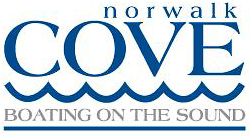Fall Boating Tips
September 27, 2012 As the days get shorter and temperatures drop, here are some things to remember when going out on the boat….- Check the Weather. Knowing the forecast and actually seeing the radar and wind predictions will make your onboard time more enjoyable. A good web forecasting tool is www.intellicast.com and view the interactive (zoomable) radar. Other good tools are the Cove weather station: http://www.ctweather.com/content/current/CLAW-Folders/CLAW019/screenID001.gif (links for both are in every Harbor Talk). A good source for wind direction, trends and forecasts with actual readings showing average wind speed, direction and gusts is SailFlow. See this link for the local readings for CT: http://www.sailflow.com/windandwhere.iws?regionID=104®ionProductID=29&timeoffset=0
- Carry a VHF Radio*. There are less people on the water in the Fall and your best chance of reaching out for help is with a VHF radio. SeaTow has automated radio check service stations around the Sound that you can call and the station will play back your radio check transmission so you can see how well your radio is working. Try it near Bridgeport on Channel 24, Huntington on 28 and Smithtown on 27. You can also call on 68 (NEVER on 16) and request a radio check and usually someone will answer. (Give your location & ask for theirs – you want to see how far you can be heard)
- Bring Extra Clothes. Usually you can assume it’s 10 degrees colder on the water. In the Fall, with the sun setting earlier, it’s not uncommon to see changes of 20 degrees or more ! Bring winter hats and dress in layers with a waterproof jacket or foul weather gear on top
Remember, VHF radios BROADCAST, Cel Phones NARROWCAST
To obtain an MMSI # online: http://www.boatus.com/MMSI/ For a mail in / fax in registration form: http://www.boatus.com/mmsi/MMSI.txt For you AND YOUR CREW to watch: (this should be required !) An interactive presentation on VHF radios and DSC produced jointly by the Coast Guard and BoatUS: http://www.boatus.com/foundation/dsc/player.html Capt. Rick Delfosse rdelfosse@rexmarine.com 203-216-7800Categories: None
